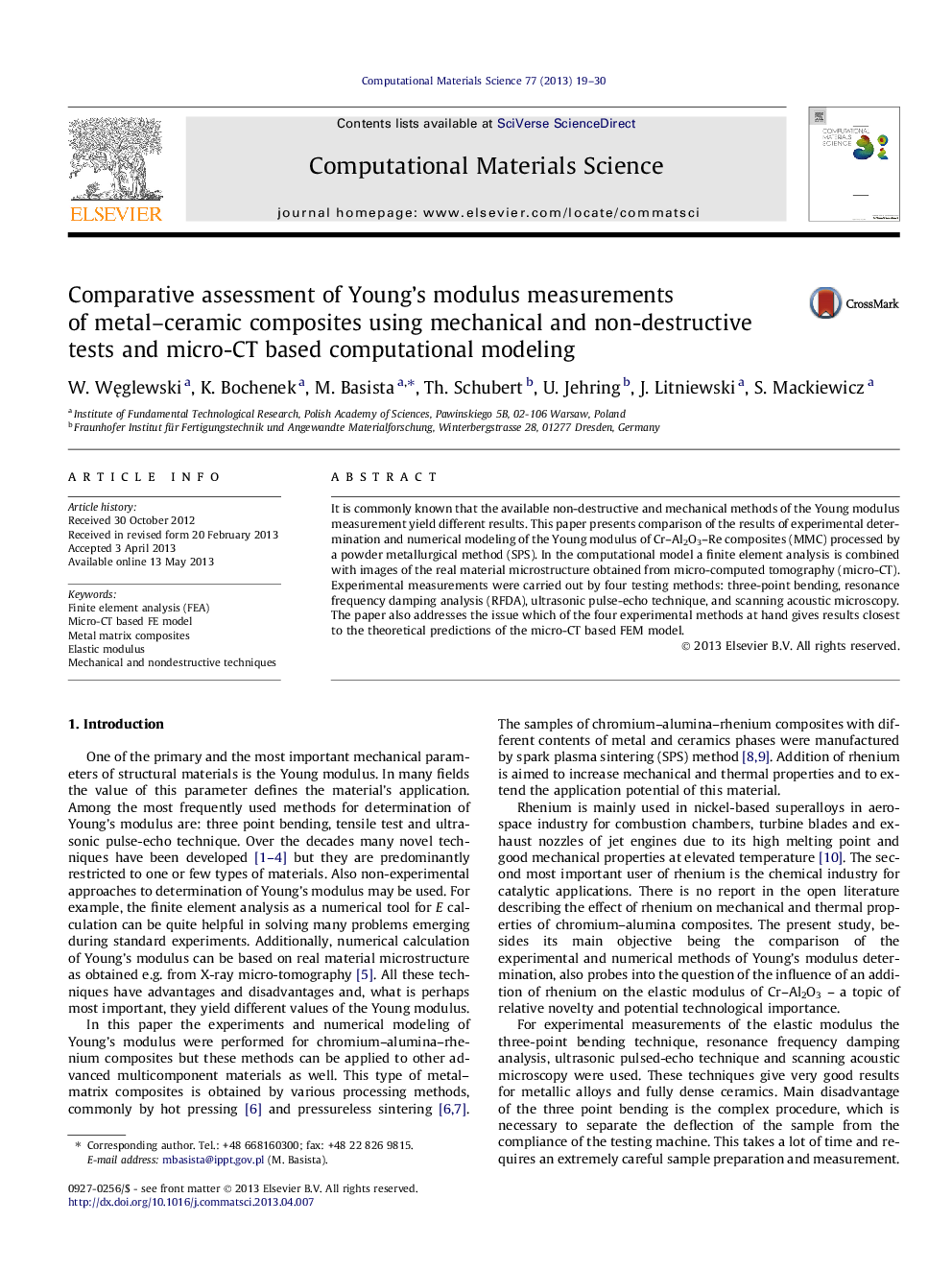| Article ID | Journal | Published Year | Pages | File Type |
|---|---|---|---|---|
| 7961656 | Computational Materials Science | 2013 | 12 Pages |
Abstract
It is commonly known that the available non-destructive and mechanical methods of the Young modulus measurement yield different results. This paper presents comparison of the results of experimental determination and numerical modeling of the Young modulus of Cr-Al2O3-Re composites (MMC) processed by a powder metallurgical method (SPS). In the computational model a finite element analysis is combined with images of the real material microstructure obtained from micro-computed tomography (micro-CT). Experimental measurements were carried out by four testing methods: three-point bending, resonance frequency damping analysis (RFDA), ultrasonic pulse-echo technique, and scanning acoustic microscopy. The paper also addresses the issue which of the four experimental methods at hand gives results closest to the theoretical predictions of the micro-CT based FEM model.
Related Topics
Physical Sciences and Engineering
Engineering
Computational Mechanics
Authors
W. WÄglewski, K. Bochenek, M. Basista, Th. Schubert, U. Jehring, J. Litniewski, S. Mackiewicz,
